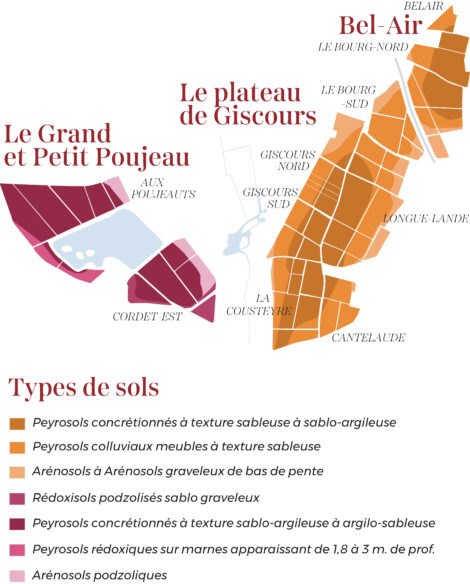Various geological studies carried out by top specialists have demonstrated the high-quality origins of our terroir: alluvial deposits of Garonne gravel dating from the Quaternary period provide the foundations for our vineyards.
On these arid, eroded soils formed of alluvial deposits, Garonne gravel transported from the Pyrenees during the Quaternary period, topography formed in the shape of what are known in the Médoc as ‘croupes gravelleuses’, or gravel hilltops. They allow excess water to drain off and enable Cabernet Sauvignon, the primary grape variety, to express itself to the full.
Giscours has three major hills, and blending these together is what gives Giscours wines their power and complexity:
Grand Poujeau & Petit Poujeau
To the west of the estate, reaching up 21 metres, Grand Poujeau is made up almost entirely of peyrosols. Brought here by the Garonne and the Dordogne, this beautiful gravel – of remarkable size – forms warm soils that are particularly well suited to Cabernet Sauvignon and enable high levels of ripeness.
Bel Air
This 12-metre hilltop has a high proportion of brunisols (gravelly sand to sandy gravel), considered to be a cooler terroir that likes hot and dry years.
The Giscours plateau, known as Cantelaude
At 17 metres, this is a clever combination of the two previous terroirs, providing fullness and depth to Merlot but also beautiful complexity to Cabernet Sauvignon.
On its hilltops, our vines’ root systems reach down up to ten or so metres, drawing the water they need in dry periods from subsurface layers of the soil. Our grape varieties of Cabernet Sauvignon, Cabernet Franc, Merlot and Petit Verdot are therefore protected from extremes of climate.





